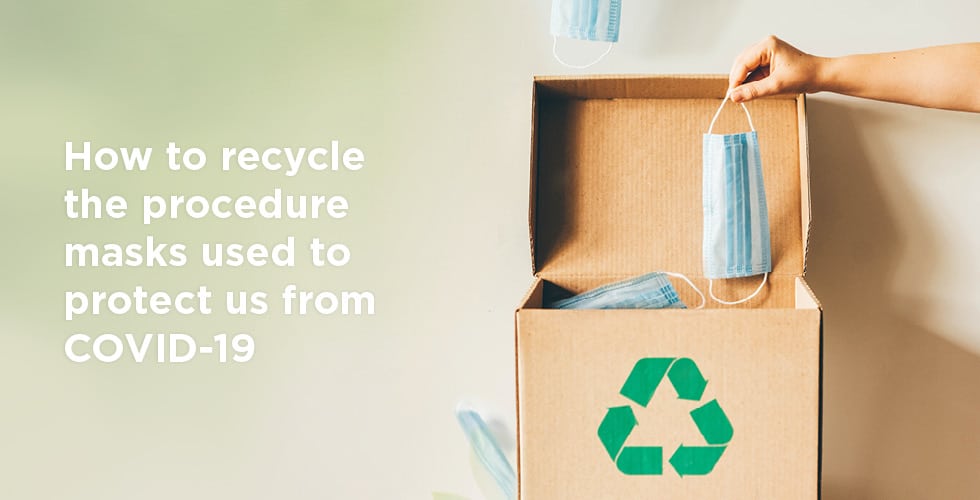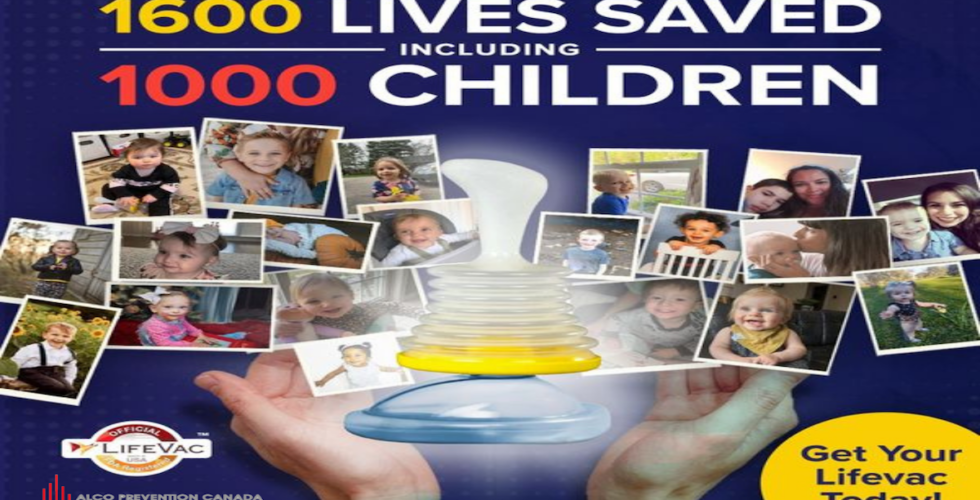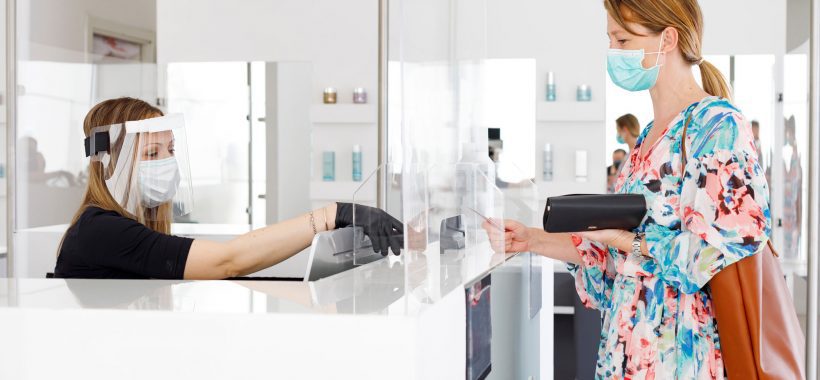4 Simple Tools to Strengthen Your Workplace Disinfection Strategy
Workplace disinfection is no longer just a reflex tied to health crises. Today, it is an integral part of occupational risk prevention strategies. Poor hygiene management can lead to repeated absences, decreased productivity, loss of employee trust, and in some cases, damage to brand reputation. Fortunately, you don’t need to invest in complex solutions to be effective. By integrating four simple tools into your workplace disinfection strategy, you can significantly improve health safety in your facilities and establish a sustainable prevention culture.
The Importance of Hygiene and Disinfection in the Workplace, Especially in Healthcare
The healthcare sector is a benchmark in prevention. Where contamination can have severe consequences, hygiene protocols are strict, documented, and continuously applied.
Applying some of these principles in a business environment is essential:
- Do not confuse cleaning and disinfection. Cleaning removes visible dirt, while disinfection destroys harmful microorganisms.
- Ensure traceability of disinfection actions, especially in sensitive sectors (food, industrial, medical).
- Multiply control points: air, surfaces, and hands must all be treated in a complementary way.
By following this example, companies can not only reduce the risk of disease transmission but also strengthen the trust of both employees and customers.
1. Air Purifier
Why Air Quality Matters
Indoor air is often up to five times more polluted than outdoor air. In closed spaces like offices or meeting rooms, viruses, bacteria, dust, and allergens circulate quickly. Without filtration devices, airborne contamination remains a constant risk.
Benefits of an Air Purifier
- Reduces viruses and bacteria in the air.
- Improves employee respiratory comfort.
- Helps prevent seasonal illnesses and reduce absenteeism.
Practical Example
The AirSoap air purifier is an innovative solution that captures and destroys harmful particles. It works with Electric Wind™ technology, which kills bacteria, polarizes airborne particles, and generates a high-energy plasma field. This process eliminates polarized particles as small as 14 nm — smaller than any virus. Installed in a meeting room, open office, or waiting area, it effectively strengthens your workplace disinfection strategy.
2. Large Surface Disinfection
The Limits of Manual Disinfection
Manually disinfecting large areas is time-consuming and prone to oversight. In high-traffic zones such as warehouses, cafeterias, or conference rooms, traditional methods are often insufficient. Large-scale disinfection solutions, such as electrostatic sprayers, can therefore be very useful.
The Advantage of Electrostatic Spraying
- Quickly covers large areas.
- Ensures uniform distribution of disinfectants.
- Reduces labor time and costs.
Practical Example
The PAX-50 portable electrostatic sprayer allows efficient disinfection of all surfaces, including hard-to-reach areas. It generates a fine electrostatically charged mist that wraps around objects 360°, ensuring complete coverage. It’s an indispensable tool for businesses seeking to automate and accelerate their workplace disinfection efforts.
3. Small Surface Disinfection
Contact Points: An Underestimated Risk
Door handles, light switches, keyboards, and phones are handled dozens of times a day. These high-touch surfaces are direct contamination vectors and must be disinfected frequently.
The Effectiveness of Disinfectant Wipes
- Practical and accessible for immediate use.
- Ideal for small, frequently touched surfaces.
- Provide quick application with proper contact time.
Practical Example
BiOSS disinfectant wipes are designed for daily workplace use. Placed near workstations or in common areas, they provide a simple solution to reduce transmission risks through contact. Their convenient format encourages frequent use, supporting regular workplace disinfection.
4. Hand Hygiene
Why Hands Are the Primary Vector
Eighty percent of contamination is spread through hands. That’s why an effective workplace disinfection strategy must include proper hand hygiene.
The Value of Touchless Dispensers
- Prevents cross-contamination (no button to press).
- Reduces product waste.
- Provides a quick and intuitive solution for everyone.
Practical Example
The XtraSafe touchless, high-capacity hand sanitizer dispenser is ideal for company entrances, cafeterias, and high-traffic areas. With its contactless operation, it encourages better hygiene practices, ensures constant availability, and optimizes workplace disinfection.
Integrating These 4 Tools into a Global Workplace Disinfection Strategy
The key to success is combining these solutions for complete coverage:
- Air: purifiers reduce airborne risks.
- Surfaces: electrostatic spraying for large areas and wipes for small touchpoints.
- Hands: strategically placed dispensers to promote daily hygiene.
Practical Steps for Success
- Assess risk areas in your facility.
- Deploy equipment progressively based on priorities.
- Train and raise employee awareness of proper usage.
- Measure effectiveness with simple KPIs (absence rates, employee satisfaction, product usage).
A well-designed strategy transforms workplace disinfection into a true competitive advantage.
FAQ
1. What is the difference between cleaning, sanitizing, and disinfecting?
Cleaning removes visible dirt, sanitizing reduces the number of germs, and disinfecting destroys them.
2. Does an air purifier replace surface disinfection?
No. It complements the strategy by treating the air, but surfaces still need to be disinfected.
3. How often should an electrostatic sprayer be used?
It depends on the sector: once daily in high-traffic areas, or several times a week in less critical spaces.
4. Are wipes enough for effective disinfection?
They’re perfect for small surfaces but should be combined with broader methods for complete protection.
5. Where should hand sanitizer dispensers be installed?
At main entrances, near elevators, in cafeterias, and close to shared workspaces.
Conclusion
Workplace disinfection should not be seen as a constraint but as a long-term investment in health and productivity.
By adopting:
- An air purifier,
- A large-surface disinfection system,
- Small-surface disinfection tools,
- And a hand hygiene dispenser,
you create a safer, healthier, and more attractive work environment for employees and clients alike.
Integrating these four simple tools strengthens your overall prevention strategy and demonstrates your commitment to collective well-being.

About Stéphane Maurais – Founder of Alco Prevention Canada
Since 1989, Stéphane Maurais has embodied passion, innovation, and determination in the service of road safety and the prevention of risks related to alcohol and drug use. Alongside his partner Ronald Chartrand—whose father tragically lost his life in a traffic accident in the 1970s—he founded Alco Prevention Canada, now recognized as a global leader in prevention solutions. These include certified single-use breathalyzers, electronic breath alcohol testers, drug screening tests, workplace health and safety programs, and event-based prevention tools.
Over a 36-year career, Stéphane Maurais has distributed millions of breathalyzers, helped save thousands of lives, and raised awareness among companies, government agencies, law enforcement, colleges, and universities around the world. He is also a pioneer in the fight against chemical submission, developing concrete tools to combat date rape drugs.
His commitment is unwavering:
“Every breath measured is a life protected. For 36 years, my mission has been simple: to save lives, one decision at a time.”
— Stéphane Maurais
Founder and President, Alco Prevention Canada










